You searched for: nazi germany
<< Previous | Displaying results 1101-1125 of 1274 for "nazi germany" | Next >>
-
Mina Beker
ID CardMina, born Mina Friedman, was the youngest of four daughters born to a Jewish family in the Lithuanian town of Jonava. At the age of 18, Mina married Osser Beker, a lumber dealer. The couple settled in Jonava where Mina worked as a seamstress. The Bekers had two sons and two daughters, but their oldest son died in a childhood accident. 1933-39: Mina's son Abe attended a Jewish religious school in Jonava. But since Mina had received an extensive Jewish education, she decided to teach her daughters at home.…

-
Doriane Kurz
ID CardDoriane Kurz’s parents, Klara and Emil Meilech Kurz, settled in Vienna, where her father ran a thriving branch of the family's multinational optical frames business. 1933-39: Doriane was born in Vienna just two years before the Germans annexed Austria in March 1938. Her family fled to the Netherlands soon after the annexation. The Kurz family moved to the town of Maastricht where a branch of the Kurz Brothers' optical frames business was located. Doriane attended nursery school in Maastricht, but the…
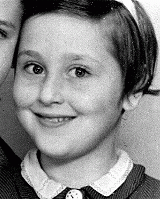
-
Wolfgang Munzer
ID CardAn only child, Wolfgang was born in Berlin to Jewish parents. His father was the foreign representative for a sewing notions company. The family lived in a comfortable apartment in the southwestern district of the city. Wolfgang attended secondary school there and hoped to become an electrical engineer. 1933-39: When the Nazis came to power, Wolfgang's father fled Germany because he was a socialist and was afraid he'd be arrested. Wolfgang's mother was very ill, so his grandmother took care of him until…
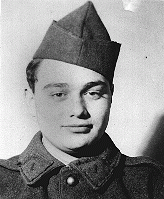
-
Franz Anton Ledermann
ID CardFranz was raised in a town in eastern Germany. The son of Jewish parents, he earned a law degree from Breslau University and a doctorate of jurisprudence from Geneva University in Switzerland. At the age of 35 he married Ilse Luise Citroen, a woman of Dutch-Jewish ancestry. The couple settled in Berlin where Franz had a successful law practice. The Ledermanns had two daughters. 1933-39: The Nazis came to power in January 1933. Ilse's Dutch relatives encouraged the Ledermanns to immigrate to the…
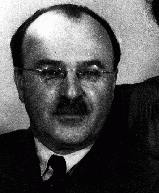
-
Ilse Luise Citroen Ledermann
ID CardIlse was one of four children born to a Dutch-Jewish father and a German-Jewish mother. In 1924 she married Franz Ledermann, a successful lawyer who was 15 years her senior. The couple made their home in Berlin, where they raised two daughters, Barbara and Susanne. 1933-39: The Nazis came to power in January 1933. While the Ledermanns were vacationing in Holland that summer, Ilse's Dutch cousin advised her not to return to Germany. Franz was reluctant to remain in Holland without a job, but when the Nazis…
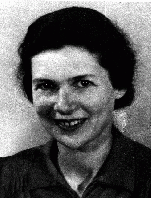
-
Gert Laske
ID CardGert was born to a Jewish family settled in northeast Berlin, known as one of the city's "red" (largely communist) districts. They lived in a large tenement building. Gert's parents were from the eastern part of Germany, which had been ceded to Poland in 1919. His father, proud of his Iron Cross, Second Class, earned in World War I, was active in an association of Jewish veterans. 1933-39: After Hitler came to power, a neighbor told Gert's mother that they couldn't greet each other on the street…

-
Ezra BenGershom
ID CardEzra was born to a Jewish family in the Bavarian city of Wurzburg. In the summer of 1929, his father, a third-generation rabbi, accepted a position as a district rabbi, guiding 12 congregations in Upper Silesia. In primary school, Ezra, who showed a keen interest in chemistry, was often harassed by his schoolmates for being Jewish. 1933-39: Because of his "Nordic" features, Ezra was able to frequent places where Jews couldn't go. In 1938, one year after he entered a Jewish secondary school in Berlin, the…
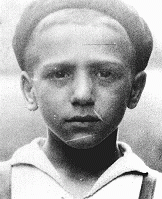
-
Bernburg T4 Facility
ArticleBernburg was the fifth of six centralized killing centers established by German authorities within the context of the Nazi “euthanasia,” or T4, program.

-
War Refugee Board: Background and Establishment
ArticleIn January 1944, FDR established the War Refugee Board which was charged with “immediate rescue and relief of the Jews of Europe and other victims of enemy persecution.”

-
Roosevelt announces aid for Britain
FilmAlthough constrained by powerful isolationist sentiment in the United States, President Roosevelt was determined to help democratic Great Britain continue the war against Nazi Germany. Even as he promised to keep the United States neutral in the European war, Roosevelt ordered the expansion of military construction and pledged--as shown in this footage--that the United States would serve as the "great arsenal of democracy." In March 1941, Congress approved Lend-Lease aid for Britain. Britain ultimately…
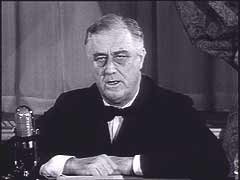
-
Henry J. Kellermann describes the reactions of defendants during the Nuremberg Trial
Oral HistoryHenry received a Doctor of Law (J.D.) degree from the University of Berlin in 1937. Sponsored by the rabbi of the Baltimore Hebrew congregation, Henry immigrated to the United States in the same year. In 1945, the Office of Strategic Services (OSS) assigned him to prepare pre-trial briefs for the International Military Tribunal held in Nuremberg, Germany. He interrogated a number of witnesses and defendants. After the war, he held various diplomatic posts.
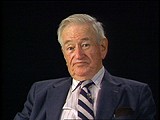
-
Fürstengrube
ArticleLearn about Fürstengrube subcamp of Auschwitz, including its establishment, administration, prisoner population, and forced labor and conditions in the camp.
-
Anne Frank: Diary
ArticleThe Diary of Anne Frank is often the first exposure readers have to the history of the Holocaust. Learn about Anne's diary, including excerpts and images.

-
Auschwitz Camp Complex
ArticleAuschwitz was the largest camp established by the Germans. It was a complex of camps, including a concentration camp, killing center, and forced-labor camp.

-
How Were the Crimes Defined?
ArticleToday, a body of international criminal law exists to prosecute perpetrators of mass atrocities. Learn about principles and precedents from the Nuremberg Charter and the IMT.
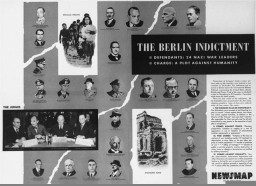
-
Les Milles Camp
ArticleUnder the Vichy regime, the Les Milles camp held foreign Jews before emigration or, in most cases, deportation to German concentration camps and killing centers.

-
The Holocaust in Odesa
ArticleIn October 1941, Romania, an ally of Nazi Germany, perpetrated mass killings of Jews in Odesa. Learn more about the Holocaust in Odesa and Ukraine.

-
Tonie Frederika Kaufmann Soep
ID CardTonie's parents came to the Netherlands from Germany in the 1880s, and their six children were born in Amsterdam. As a child, Tonie studied the piano, and she excelled in French. When she married Abraham Soep, a diamond manufacturer, Tonie adopted her husband's observant Jewish practices. Their three children were born in 1919, 1923, and 1924. 1933-39: Tonie's husband served for many years as the president of the Amsterdam Jewish community. The Soeps had a large and comfortable home. Tonie and Abraham…
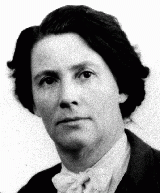
-
Rosa Israel Waldhorn
ID CardRosa was one of 14 children born to religious Jewish parents in the village of Yasinya at a time when it was known as Korosmezo and was part of Hungary. During World War I, she married Michael von Hoppen Waldhorn, an officer in the Austro-Hungarian army who was based near Yasinya. During the 1920s they moved to Paris, where they raised three children. 1933-39: The Waldhorn family's life in Paris was very different from their life in Hungary and Czechoslovakia. Rosa's husband made a good living, and he…
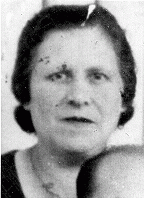
-
Zuzana Gruenberger
ID CardZuzana was the youngest of three children born to Hungarian-speaking Jewish parents in the city of Kosice. She was the baby of the family, and they called her Zuzi. Her father was a tailor whose workshop was in the Gruenbergers' apartment. 1933-39: In November 1938, when Zuzana was 5, Hungarian troops marched into Kosice and made it a part of Hungary. The Hungarians changed the name of the city to Kassa. The Hungarian government was friendly to Nazi Germany and introduced anti-Jewish laws in…
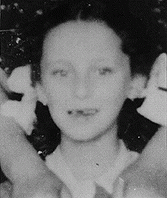
-
Ossi Stojka
ID CardOssi was the youngest of six children born to Roma ("Gypsies") who traveled in a family wagon. His family was Roman Catholic. Their caravan spent winters in Vienna, Austria's capital, and summers in the Austrian countryside. The Stojkas belonged to a tribe called the Lowara Roma, who made their living as itinerant horse traders. Ossi's ancestors had lived in Austria for more than 200 years. 1933-39: Ossi was 2 years old when Germany annexed Austria in March 1938. The Stojka family wagon was parked for the…

-
Bertha Wolffberg Gottschalk
ID CardBertha was born to Jewish parents in the capital of East Prussia. Her father served on the Koenigsberg city council. In 1887 Bertha married Hugo Gottschalk, and the couple settled in the small town of Schlawe in northern Germany. There, Hugo owned the town's grain mill. The Gottschalks raised their four children in a home near a small stream, ringed by orchards and a large garden. 1933-39: Bertha and her daughter Nanny have moved to Berlin--Hugo passed away in 1934 and they were afraid of the growing…
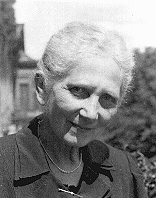
-
Frederick Dermer
ID CardFrederick was born to a Jewish family in the Austrian capital of Vienna. His father died when he was a baby, and he and his mother moved into an apartment with Frederick's widowed grandfather. As a young boy, Frederick attended a Viennese public school. 1933-39: Frederick was a rambunctious child. Once, when his grandfather was baby-sitting, Frederick used a silk lampshade as a "parachute," and jumped from the top of the wardrobe closet. That was the last time Frederick's grandfather would baby-sit.…

-
Jacob Gamper
ID CardJacob was born to a Jewish family in the Baltic seaport of Liepaja. He owned a clothing store in the city, and also owned some apartments, from which he collected rent. After his wife died, Jacob, who had retired, moved in with his daughter Sarah. 1933-39: Jacob was an avid reader. His favorite newspaper was Liepaja's German language daily, the Libauer Zeitung, which he liked to read in the garden and orchard around his daughter's home. On Sundays, "Grampa" would take his granddaughters Fanny and Jenny…
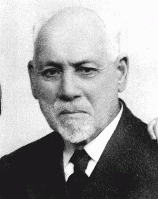
-
Poster depicting the Statue of Liberty and flags of Allied Nations
ArtifactPoster titled “The United Nations Fight For Freedom.” It was one of many posters produced by the Office of War Information, the United States’s official propaganda agency during World War II. Canadian-American commercial artist Steve Broder (1902-1992) designed this work to bolster confidence in the Allied war effort against the Axis Powers (Nazi Germany, Fascist Italy, and Imperial Japan). It depicts the 30 flags of countries that signed the Declaration by the United Nations and declared war on the…

